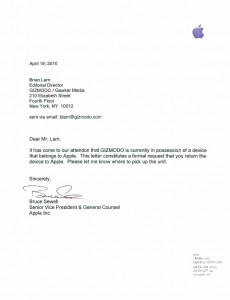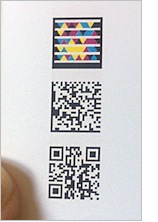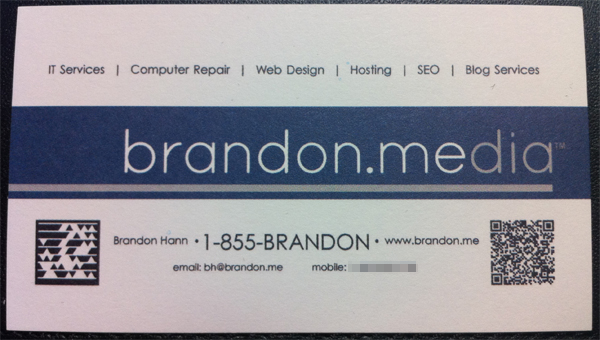I’m not the first to report this, but I will toss in my two cents. First off, if you haven’t heard, someone is claiming to have found an iPhone at a bar in San Jose and upon closer inspection, noticed that it was not your everyday iPhone! They go on to further claim that it is the newest iPhone expected out this summer and was disguised in an iPhone 3GS case.
The new iPhone is speculated to be called iPhone 4G or iPhone HD due to its faster network speed and HD screen. If the new phone is to sport a screen like the iPad, the price might still be too high for most. The HD screen for the iPad costs around $60 while the same screen in iPhone size might reach as high as $500. Gizmodo has launched a full story on the issue, and here is what they found in terms of hardware:
What’s new
- Front-facing video chat camera
- Improved regular back-camera (the lens is quite noticeably larger than the iPhone 3GS)
- Camera flash
- Micro-SIM instead of standard SIM (like the iPad)
- Improved display. It’s unclear if it’s the 960×460 display thrown around before—it certainly looks like it, with the “Connect to iTunes” screen displaying much higher resolution than on a 3GS.
- What looks to be a secondary mic for noise cancellation, at the top, next to the headphone jack
- Split buttons for volume
- Power, mute, and volume buttons are all metallic
What’s changed
- The back is entirely flat, made of either glass (more likely) or ceramic or shiny plastic in order for the cell signal to poke through. Tapping on the back makes a more hollow and higher pitched sound compared to tapping on the glass on the front/screen, but that could just be the orientation of components inside making for a different sound
- An aluminum border going completely around the outside
- Slightly smaller screen than the 3GS (but seemingly higher resolution)
- Everything is more squared off
- 3 grams heavier
- 16% Larger battery
- Internals components are shrunken, miniaturized and reduced to make room for the larger battery
Is this real?
According to John Gruber at Daring Fireball, Apple has has lost a prototype although Apple is considering the phone “stolen” and they would like it back. Gizmodo apparently got wind of this phone from the individual who found it and subsequently purchased the phone, disassembled it and created the exclusive article and breakdown as summarized above.
The person who found it also mentioned that at first, he/she was able to play with the operating system for a bit before Apple apparently remotely wiped it (naturally). Now, all they get is the “Connect to iTunes screen”. However, it has been said that when the OS was working, it appeared to be that of iPhone 4.0 which is due out around the same time as the expected new phone.
My two cents
I don’t really care if it’s real or not. I won’t be buying a new iPhone this year anyway. In an effort to save money, I have started a plan to skip a year for new phones, so I’m staying with my 3GS. However, this phone does look pretty slick and if this is the new design, I’m pretty happy with it.
I was just thinking how funny it would be if this whole episode was planned by Apple in an effort to generate more buzz while at the same time diverting attention away from the actual design of a new iPhone. I wouldn’t put it past Apple to send this out in the world so other phone makers can copy the look and feel and then turn around and release something completely different!
At any rate, if this is legit and the phone was “lost” or “stolen” and if Gizmodo actually paid a price to exploit it, I believe they’re going to have some tough questions to answer if Apple decides to pursue this issue legally.
UPDATE 4-20-10
This phone is indeed “a device that belongs to Apple” according to a letter sent to Gizmodo by Bruce Sewell, Senior VP and General Counsel for Apple. Here’s the full letter:

Also, we all know the who the person is that lost it! His name is Gray Powell an Apple software engineer. He truly did leave the phone on a bar stool after getting drunk on his 27th birthday. The bar is a place called Gourmet Haus Staudt and it’s located in Redwood City, CA. All you crazy Apple fans can now go here and see the very stool that the new iPhone was left on for the world to discover months before it came out. They have the stool behind bullet-proof glass and you can’t take pictures of it, but it’s sure worth the drive!
Get the full story on how this whole fiasco unfolded at Gizmodo.
As for me, I feel sorry for Gray and I hope Apple doesn’t fire him for this mistake. Apple (as well as all of us) knows that this won’t hurt sales at all! In fact, it might even boost sales. They can now use the constructive criticism that’s sure to come to make improvements. Of course we lose the excitement of seeing the latest device from Apple being unveiled, but isn’t this whole story exciting enough?
There it is folks…the new iPhone has been leaked and the most uptight and secured company in the world has had a major blow dealt to its ego. My thoughts? Let’s move on to more important things in life–like when will the iPhone come to Verizon?!
UPDATE 6-9-10
We all know now that the iPhone 4 has just been announced and all your dreams of owning one can now become a reality on June 24th. In fact, AT&T has even allowed early upgrades for previous iPhone owners. This means that I might actually be getting the new phone! All I have to do is find someone that wants to buy my 3GS from me. Good thing there’s people on eBay looking to buy phones without having to sign up for a 2 year contract.
UPDATE 6-21-10
After a crazy and disasterous pre-order system and a bunch of drama later, I finally ordered my iPhone 4 and can expect it at my door sometime this week!





 any problems with this, but the whole story got me thinking about trademarks in general and the ensuing battles between stakeholders. More specifically, I started thinking about trademarks becoming genericized and what would happen to if Google™ simply became, google…
any problems with this, but the whole story got me thinking about trademarks in general and the ensuing battles between stakeholders. More specifically, I started thinking about trademarks becoming genericized and what would happen to if Google™ simply became, google…



